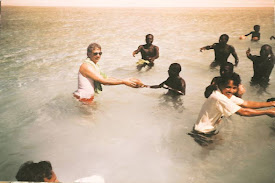Prohibited ISLAND in INDIA
North Sentinel Island is one of the Andaman Islands, an archipelago in the Bay of Bengal which also includes South Sentinel Island.It is home to the Sentinelese, an indigenous people in voluntary isolation who have defended, often by force, their protected isolation from the outside world.
The Andaman and Nicobar Islands Protection of Aboriginal Tribes Act of 1956 prohibits travel to the island and any approach closer than five nautical miles (9.26 km) in order to prevent the resident tribespeople from contracting diseases to which they have no immunity. The area is patrolled by the Indian Navy.
Nominally, the island belongs to the South Andaman administrative district, part of the Indian union territory of Andaman and Nicobar Islands. In practice, Indian authorities recognise the islanders' desire to be left alone and restrict their role to remote monitoring; they do not prosecute them for killing people. The island is a protected area of India.
The Sentinelese have repeatedly attacked approaching vessels. This resulted in the deaths of two fishermen in 2006 and a US missionary, John Allen Chau, in 2018.
In November 2018, John Allen Chau, a 26-year-old US missionary trained and sent by Missouri-based All Nations, was killed during an illegal trip to the restricted island, planning to preach Christianity to the Sentinelese.
"You guys might think I'm crazy in all this but I think it's worthwhile to declare Jesus to these people. Please do not be angry at them or at God if I get killed ..."
British surveyor John Ritchie observed a multitude of lights" from an East India Company hydrographic survey vessel, the Diligent, as it passed by the island in 1771. Homfray, an administrator, travelled to the island in March 1867.
Towards the end of the same year's summer monsoon season, Nineveh, an Indian merchant ship, was wrecked on a reef near the island. The 106 surviving passengers and crewmen landed on the beach in the ship's boat and fended off attacks by the Sentinelese. They were eventually found by a Royal Navy rescue party.The first peaceful contact with the Sentinelese was made by Triloknath Pandit, a director of the Anthropological Survey of India, and his colleagues on 4 January 1991. Although Pandit and his colleagues were able to make repeated friendly contact, dropping coconuts and other gifts to the Sentinelese, no progress was made in understanding the Sentinelese language, and the Sentinelese repeatedly warned them off if they stayed too long. Indian visits to the island ceased in 1997.




Super
ReplyDeleteNice ..
ReplyDeleteSuper 👌
ReplyDeleteVery usefull ����
ReplyDelete